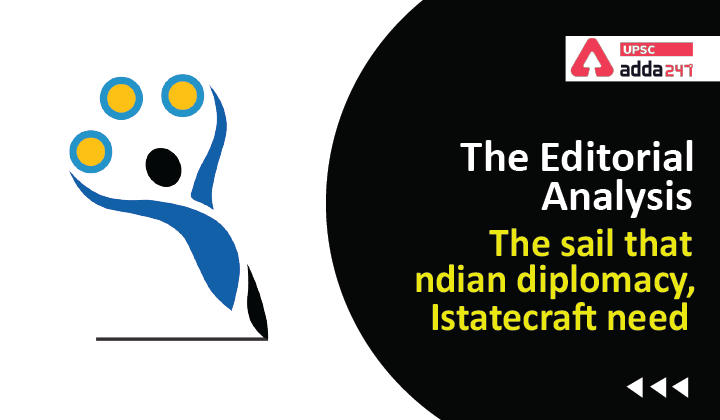Table of Contents
Relevance
- GS 2: India and its neighborhood- relations.
Context
- India has decided to host the five Central Asia leaders at the Republic Day Parade this year. While the invitation is significant symbolically, a lot of hard work needs to be done to materialise the India-Central Asia relations.
India’s attempt to build relation with Central Asia
- In 2015, a year after getting elected, our prime minister visited all the five Central Asian states.
- India’s National Security Adviser Ajit Doval and External Affairs Minister S. Jaishankar also hosted their Central Asian counterparts in Delhi.
- India’s continental strategy: promoting connectivity, incipient defence and security cooperation, enhancing India’s soft power and boosting trade and investment.
- Though noble, the above strategies seem to be insufficient to address the broader geopolitical challenges engulfing the region.
Focus of Indian diplomacy: Broad contours
Focussing on Eurasia
- Eurasia is the largest continental area on Earth, comprising all of Europe and Asia.
- Eurasia has become a geo-politically active region due to reasons like
- withdrawal of forces of the United States/North Atlantic Treaty Organization (NATO) from Afghanistan,
- the rise of Islamic fundamentalist forces,
- the changing dynamics of the historic stabilising role of Russia (most recently in Kazakhstan)
- Related multilateral mechanisms — the Shanghai Cooperation Organization (SCO), the Collective Security Treaty Organisation, and the Eurasian Economic Union.
- To be an active member of this region, India needs to undertake a complex and long-term exercise.
Re-aligning maritime security
- At present, India’s maritime security is majorly guided by National Maritime Strategy, the Security and Growth for All in the Region (SAGAR) initiative for the Indian Ocean Region and major initiatives relating to the Indo-Pacific and the Quad.
- China’s aggression can be seen in the following cases: Belt and Road Initiative, undercutting traditional Russian influence, gaining access to energy and other natural resources, and dependency-creating investments, cyber and digital penetration and expanding influence among political and economic elites across the continent.
- Indian strategies need to be better aligned to counter the Chinese attempt to establish its hegemony in the region. Indian maritime strategies should focus on:
- keeping sea lanes open for trade, commerce and freedom of navigation,
- resisting Chinese territorial aggrandisement in the South China Sea and elsewhere, and
- helping littoral states resist Chinese bullying tactics in interstate relations.
- Like Association of Southeast Asian Nations (ASEAN) centrality is key to the Indo-Pacific, centrality of the Central Asian states should be key for Eurasia.
Resolving connectivity issues
- The border areas of our country are witnessing increased militarisation from both sides—Pakistan in the east and China on the west.
- Alternative routes like the International North-South Transport Corridor, which is suffering from US hostilities due to Iran, need to be made operational by proper diplomatic steps.
- About INSTC: The International North–South Transport Corridor (INSTC) is a 7,200-km-long multi-mode network of ship, rail, and road route for moving freight between India, Iran, Afghanistan, Azerbaijan, Russia, Central Asia and Europe.
Being ‘Aatmanirbhar’ in maritime security
- The US-Russia relation is suffering from many confrontations. It includes, confrontation relating to Ukraine, Russian opposition to future NATO expansion, demise of the Intermediate-Range Nuclear Forces (INF) treaty, among others.
- Moreover, US review of its global military commitments like withdrawal of forces from Afghanistan and substantially decreasing troops under its European command, are also showing US reluctance to play an active role in world affairs.
- The Indian strategies, in this situation, should not be centred around any particular country, and must encompass all the stakeholders in the region.
Collaborating with like-minded nations
- India needs to asset its right through an effective collaboration with our partners in Central Asia, with Iran and Russia, and a more proactive engagement with economic and security agendas ranging from the SCO, Eurasian Economic Union (EAEU) and the Collective Security Treaty Organization (CSTO).
Way forward
- India will need to define its own parameters of continental and maritime security consistent with its own interests.
- Striking the right balance between continental and maritime security would be the best guarantor of our long-term security interests.
Also Read:





 TSPSC Group 1 Question Paper 2024, Downl...
TSPSC Group 1 Question Paper 2024, Downl...
 TSPSC Group 1 Answer key 2024 Out, Downl...
TSPSC Group 1 Answer key 2024 Out, Downl...
 UPSC Prelims 2024 Question Paper, Downlo...
UPSC Prelims 2024 Question Paper, Downlo...




